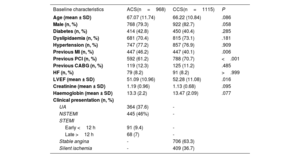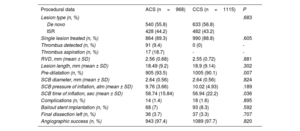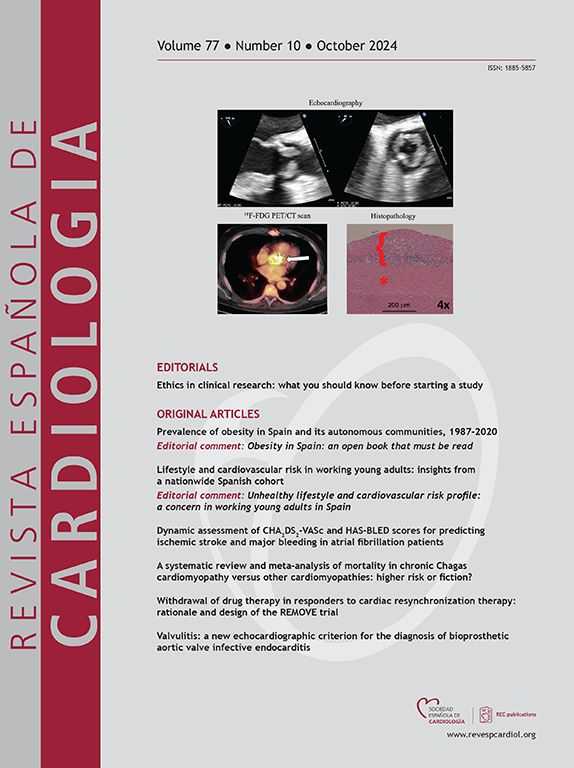
The PEACE study (Performance of a sirolimus-eluting balloon strategy in acute and chronic coronary syndromes) investigated for the first time whether a sirolimus-coated balloon (SCB) (Magic Touch, Concept Medical, India) is associated with different outcomes depending on whether it is used in acute coronary syndromes (ACS) or chronic coronary syndromes (CCS).
MethodsThis was a post-hoc analysis from the all-comers EASTBOURNE Registry (NCT03085823). Out of 2083 patients enrolled, an SCB was used to treat 968 (46.5%) ACS and 1115 (53.5%) CCS patients. The primary endpoint was target lesion revascularization at 12 months, while secondary endpoints were angiographic success and major adverse cardiovascular events.
ResultsBaseline demographics, mean reference vessel diameter and mean lesion length were comparable between ACS and CCS. Predilatation was more commonly performed in ACS (P=.007). SCB was inflated at a standard pressure in both groups with a slight trend toward longer inflation time in ACS. Angiographic success was high in both groups (ACS 97.4% vs CCS 97.7%, P=.820) with limited bailout stenting. Similarly, at 12 months the cumulative incidence of target lesion revascularization (ACS 6.6% vs CCS 5.2%, P=.258) was comparable between ACS and CCS. Conversely, a higher rate of major adverse cardiovascular events in acute presenters was mainly driven by myocardial infarction recurrencies (ACS 10.4% vs CCS 8.3%, P=.009). In-stent restenosis showed a higher proportion of target lesion revascularization and major adverse cardiovascular events than de novo lesions, independently of the type of presentation at the index procedure.
ConclusionsThis SCB shows good performance in terms of acute and 1-year outcomes independently of the clinical presentation.
Keywords
Identify yourself
Not yet a subscriber to the journal?
Purchase access to the article
By purchasing the article, the PDF of the same can be downloaded
Price: 19,34 €
Phone for incidents
Monday to Friday from 9am to 6pm (GMT+1) except for the months of July and August, which will be from 9am to 3pm










